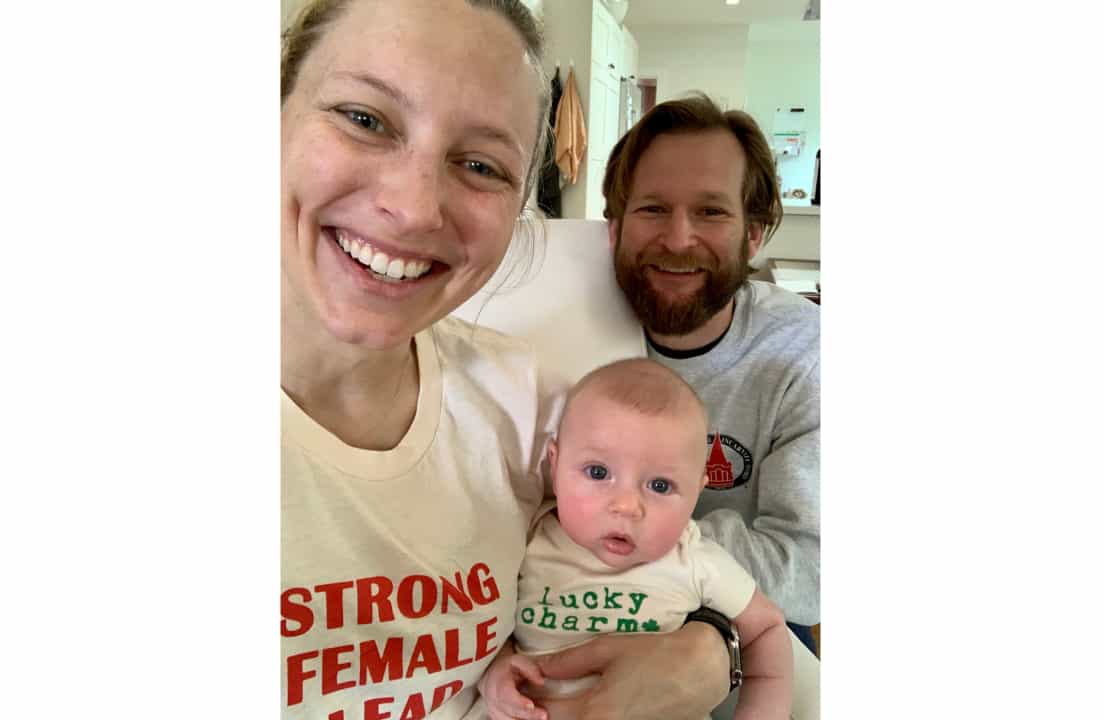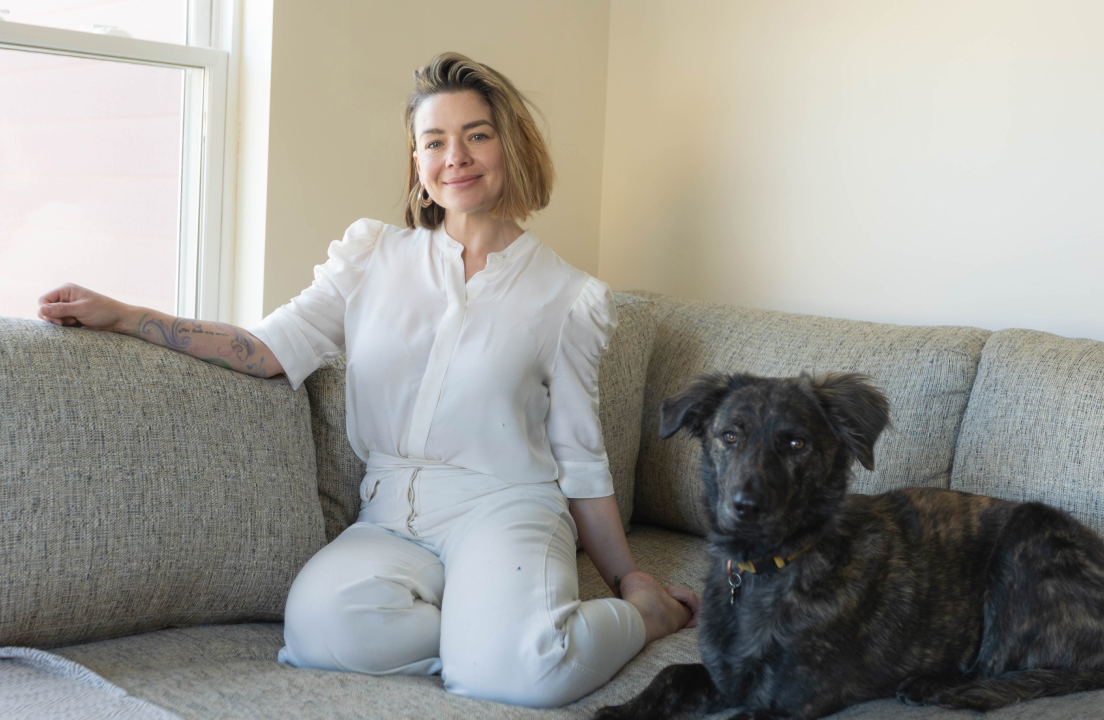T1D Guide
T1D Strong News
Personal Stories
Resources
T1D Misdiagnosis
T1D Early Detection
Research/Clinical Trials
She Knew It Was Type 1 Diabetes: No One Would Listen
By the time Katie Van Dyk was finally diagnosed with type 1 diabetes (T1D), she had already spent nearly a year trying to convince her doctors that something wasn’t right. She wasn’t a stranger to self-advocacy. As an attorney, she’s trained to ask questions, look for evidence, and build a case based on facts. But when her blood sugar spiked during her first pregnancy, every fact she presented and the questions she asked were brushed aside.
.jpg)
T1D Warning Signs Before Diagnosis
“I was 33, fit, eating healthy, training for a 150-mile bike ride,” she recalled. “When my OB said, ‘You’re diabetic,’ I thought, ‘That doesn’t make any sense.’ And when she said it was gestational diabetes, I knew that wasn’t right either.”
Katie’s story isn’t unique. It’s another reminder of how often adults with new-onset T1D are misdiagnosed, even when their symptoms and insulin needs suggest otherwise.
Reflecting on her journey, Katie can trace her story back to 2017, two years before her pregnancy.
“I went camping and got a tick bite,” she said. “I had the rash, the fever—all the classic Lyme disease symptoms.” She was prescribed Doxycycline, a standard treatment that left her feeling awful for months.
“I just never felt right for almost two years,” she explained. “Then, in January of 2019, I finally started feeling better. I was training, eating lower carb, and getting ready for this big 150-mile bike ride. I was feeling amazing—strong, lean, healthy—and right after that ride, I found out I was pregnant.”
At nine weeks pregnant, Katie went for a walk with a friend and suddenly felt dizzy and disoriented. She’d had hormonal migraines before, but this felt different. Her obstetrician (OB) urged her to go to the emergency room (ER). Doctors there decided it was just another migraine.
A few weeks later, the same thing happened again; only this time, her blood sugar levels were high.
That’s when her OB walked in and said the words that still echo for Katie years later: “I know this sounds crazy, but you’re diabetic.”
“They told me it was gestational diabetes.”
Katie’s first thought was confusion. “I said, ‘That doesn’t make sense—I’m healthy and only 12 weeks pregnant. Gestational diabetes usually happens later.’”
But her OB insisted. “Any diabetes we diagnose during pregnancy is gestational diabetes,” she told her.
Katie didn’t buy it. “I said, ‘What about type 1? What about type 2? How do you know which kind this is?’”
Still, the team stuck to their script. They prescribed insulin and gave Katie vague instructions. “It was reckless,” she said. “They told me to ‘take eight units when you eat,’ with no explanation about how carbs affect blood sugar, no mention of ratios or correction factors. Nothing! I kept notes from that time, and looking back now, I can’t believe how little guidance I was given.”
Even more shocking? The type of insulin they prescribed.
“They put me on NPH,” she said. “In 2019. While I was pregnant. That’s absurd. NPH is unpredictable and outdated, especially for someone managing pregnancy blood sugars.”
Neutral Protamine Hagedorn (NPH) insulins, such as Novolin, are types of intermediate-acting insulin used to treat diabetes. They are typically administered through injections twice daily, peaking at around 6-12 hours with a 1-3 hour onset.
People with type 1 diabetes generally avoid using NPH insulin because more effective and faster-acting options are available for managing the condition. Pregnant women are also typically advised against NPH insulin, as it can increase the risk of complications. The use of NPH insulin in women has been shown to cause unpredictable blood sugar levels, a higher risk of hypoglycemia, maternal complications, and fetal complications.
“You’re a type 2.”
Throughout her pregnancy, Katie tried repeatedly to convince her doctors that she likely had T1D. But each attempt was dismissed.
“I had one doctor walk in and say, ‘Okay, you’re 25 weeks and type 2 diabetic,’” she remembered. “I said, ‘No, I’m not type 2. I’m type 1.’
He said, ‘We don’t have a test for that during pregnancy.’ I asked for an antibody test, and they said it wouldn’t be accurate because I was pregnant.”
Katie’s frustration was growing. “I told them, ‘I’m eating no carbs and I still need insulin. Doesn’t that make it obvious?’ But they’d just say, ‘You’re doing great, keep it up.’”
By the end of her pregnancy, she was taking 35 units of insulin per day despite being lean and only gaining 25 pounds. “Nothing about it made sense,” she said.

Her A1C remained a steady 5.4 percent, thanks to her meticulous management. “But I wasn’t being treated like a person with type 1. I was treated like someone with gestational diabetes trying to ‘get by’ until delivery.”
“We assumed it went away.”
Katie gave birth to a healthy baby in late 2019. Postpartum, no one suggested follow-up testing. “Everyone just assumed it went away,” she said. “And I wanted to believe that, too.”
By February 2020, though, something felt off.
“I was at a friend’s house, eating chicken and veggies—no carbs—and I suddenly felt awful,” she said. “I tested my blood sugar and it was 265 mg/dL.”
This time, she pushed hard for an endocrinology referral. It took six weeks to get in. When her lab results came back, the answer was undeniable.
“You have type 1 diabetes,” the endocrinologist said. Her antibody tests were positive.
Recognizing the Signs of T1D
Katie’s experience shows how easy it is for adults to be misdiagnosed when doctors rely on assumptions instead of evidence.
The early signs of T1D can be subtle at first, but they progress quickly once beta cells stop producing enough insulin. Common symptoms include:
- Extreme thirst and frequent urination
- Unexplained weight loss
- Blurred vision
- Fatigue or weakness
- Nausea or stomach pain
- Recurrent infections or slow-healing wounds
In adults, these symptoms can appear more gradually than in children, which leads some providers to assume type 2 diabetes. But a simple blood test for autoantibodies and C-peptide levels can confirm T1D quickly and accurately.
“I was right all along.”
“I remember feeling angry, but also validated,” Katie said. “I had been saying this for almost a year. I had been right. But no one would listen.”
Within months, she started using a continuous glucose monitor (CGM) and switched from injections to the Omnipod pump. Soon after, she began using a do-it-yourself (DIY) loop, an open-source automated insulin delivery (AID) system.
“I’m very tech-forward and comfortable problem-solving, so looping made sense to me,” she said. “I haven’t looked back since.”
Today, Katie lives in Austin, Texas, with her husband and their two sons, Magnus (6) and Clyde (3). When she’s not practicing law, she produces independent films with her husband, who writes and directs.

Her diabetes management is steady now, but the memory of that misdiagnosis still stings.
“It seems so crazy that these stories keep happening,” she said. “It’s not that hard to test for T1D. The symptoms are so obvious. It’s almost like everyone should be screened.”
Why Misdiagnoses Still Happen
Up to 40 percent of adults with new-onset T1D are initially misdiagnosed as having type 2 or gestational diabetes.
This happens for several reasons:
- Bias: Many healthcare providers still think of type 1 as a “childhood disease.”
- Assumptions: Adults who appear healthy or aren’t underweight are often ruled out for type 1.
- Lack of testing: Antibody tests aren’t always ordered unless patients push for them, and they typically don’t know to ask.
Katie’s persistence likely protected her from severe complications. Without insulin and careful management, undiagnosed T1D can quickly lead to diabetic ketoacidosis (DKA), a life-threatening emergency.
The Cost of Not Listening
For Katie, the cost of misdiagnosis could have been devastating. Pregnancy already increases insulin resistance and hormonal fluctuations. Without proper education and the correct insulin regimen, she was forced to self-teach the basics of diabetes management in one of the most high-stakes health situations imaginable.
“I was lucky I did as well as I did,” she said. “But it shouldn’t take luck. It should take good medicine.”
Her story is also a powerful reminder for anyone newly diagnosed—or anyone whose diagnosis doesn’t make sense—to keep asking questions.
“If something feels off, push for testing,” she said. “Ask for an autoantibody panel. Ask for a C-peptide test. You deserve real answers.”
Looking Forward
Today, Katie channels her energy into living fully: managing T1D while raising two young boys, working full time, and creating films that inspire conversation and empathy.

She also plans to have her children screened for type 1 risk. “I want to know,” she said. “If there’s a way to catch it early, I want to be ready.”
Katie’s story is personal but is also universal. Because she trusted her intuition and didn’t give up, someone finally heard her.
“It took a lot of self-trust to keep pushing,” she reflected. “But that’s what people with diabetes do every day. We learn, we question, we adapt. And sometimes, we have to fight for the truth.”








.webp)

.jpeg)
.jpg)
.webp)
.jpg)



.jpg)
.jpg)

.jpg)
.jpg)
.jpg)
.jpg)
.jpg)

.jpg)
.jpg)
.jpg)
.jpg)
.jpg)
.jpg)
.jpg)
.jpg)

.jpg)
.jpg)

.jpg)
.jpg)
.jpg)

.jpg)
.jpg)


.jpg)
.jpg)
.jpg)
.jpg)
.jpg)














.jpg)


.jpg)













.webp)





%20(1).png)




.jpeg)






.jpg)











.jpg)
.webp)









.webp)